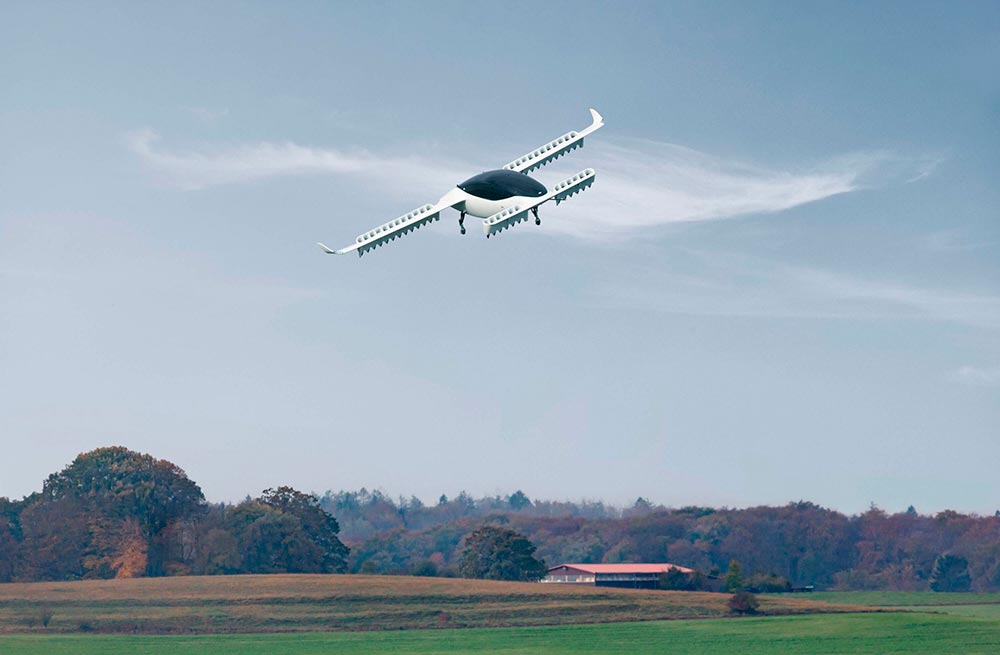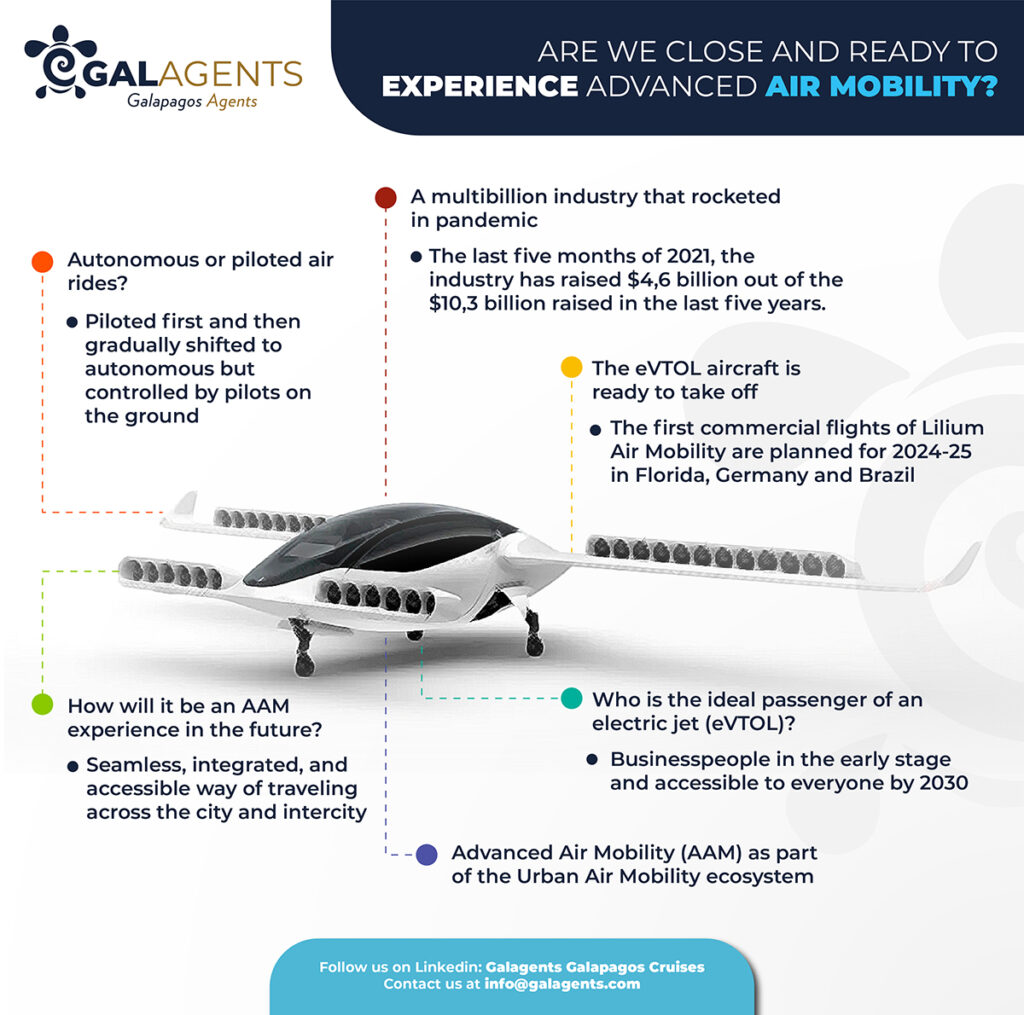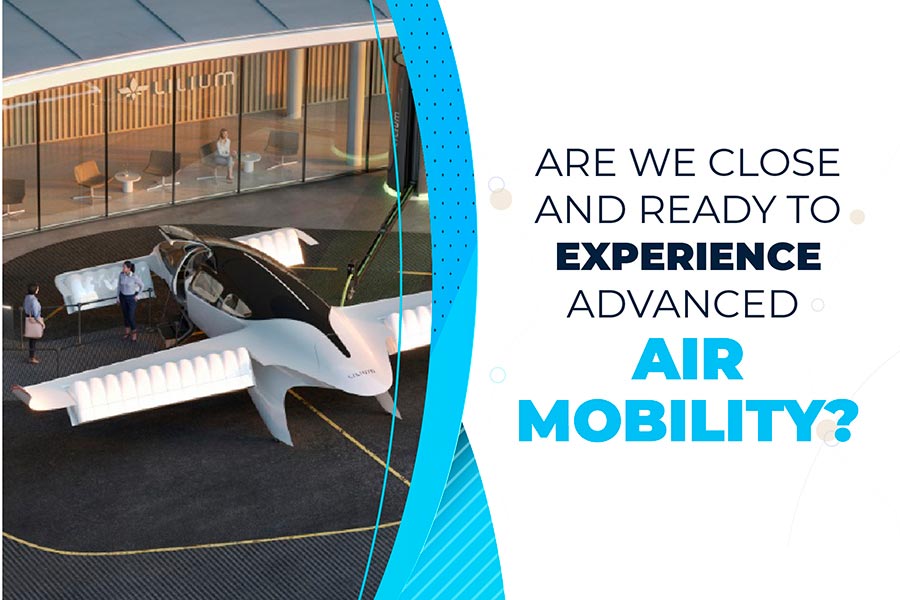A few decades ago, we wouldn’t have even thought about having a cellphone, not even a video call. These scenarios were fantasy, only seen in the movies. You’re definitely not a centennial if you know what we’re talking about. However, many waters have flown down the river since the 80s, 90s, and early 2000s. So, believe it or not, we’re just a few years from experiencing Advance Air Mobility (AAM), such as the Jetsons comic. Hopefully, this technology will change how we move and travel. Thus, continue reading and discover how this futuristic reality is closer than ever.
Advanced Air Mobility as part of the Urban Air Mobility ecosystem
Before digging into the Advanced Air Mobility concept, we need to define Urban Air Mobility (UAM). According to the US Federal Aviation Administration (FAA), UAM is a “…safe and efficient aviation transportation system that will use highly automated aircraft that will operate and transport passengers or cargo at lower altitudes within urban and suburban areas.”
Moreover, UAM requires the development of an ecosystem to guarantee the service in a safe way that considers aircraft, operations, airspace, infrastructure, and community engagement. Thus, “Advanced Air Mobility (AAM) builds upon the UAM concept by incorporating use cases not specific to operations in urban environments” by offering a series of services such as commercial inter-city rides with more extended range and thin haul, cargo delivery, public services, or private and recreational purposes.
AAM uses existing helicopter infrastructure like routes, helipads, and Air Traffic Control services in terms of infrastructure. Yet, many aerospace companies consider the construction of “vertiports” or a type of airport designed to allow aircraft to land and take off vertically by using helipads.

Photo by actualidadaeroespacial.com
The eVTOL aircraft is ready to take off.
You may be thinking about what eVTOL means, aren’t you?
So, eVTOL is the acronym for “electric vertical takeoff landing and refers to a new type of aircraft that was first introduced in 2011” (Volocopter.com). Believe it or not, one company has everything set for launching the first commercial flight in 2024-25 to connect passengers and cargo within cities, and that’s Lilium Air Mobility.
Lilium plans to begin operations in Florida and some locations in Germany and Brazil. They want to offer an overall experience that will start with the check-in process, the seamless flight and getting on and off the aircraft.
According to Daniel Wiegand, CEO of Lilium, eVTOL will expand our radius of life by speeding up our everyday travel, and “2025 will be the launch phase of this industry, and by 2030 it will be ramping up, (…) and eVTOL will become a part of everyday life.” Yet, the industry expects that by 2030 this mobility offering will be fully developed and widely accessible for everyone.
However, Lilium is not alone in this industry. Indeed, evtol.com showcases how this revolutionary technology is evolving with the support of governmental entities such as the US Senate, the Federal Aviation Administration, and the British Government, among others.

A multibillion industry that rocketed in pandemic
According to McKinsey, future air mobility has raised $10,3 billion in the last five years, and only in the last five months of 2021 has the industry raised $4,6 billion from investors. Interestingly, the focus on investment shifted from 2018, which focused two-thirds of the funds on surveillance and cargo drones, while the other one-third was distributed between supersonic and advanced air mobility. Then, in 2019, the trend shifted to advanced air mobility with an average deal size of approximately $20 million. Yet, in 2020 AAM investment skyrocketed, and in 2021 the average investor deal size was $245 million and ended with 19 deals closed.
How will it be an AAM experience in the future?
According to some experts in aerospace and mobility, humans are close to experiencing a seamless, integrated, and accessible way of traveling. The big question is when it will happen instead of if it happens.
Soon, experts say that we will be traveling across the city or intercity by using an integrated mobility app. Indeed, allow us to choose the vehicle we need to use in different stages of our day-by-day journey.
For example, Kersten Heineke described a daily journey such as taking an e-scooter ride in the morning to the closest vertiport to our home, then taking an eVTOL flight, landing in the city, and getting another e-scooter ride for the extra mile to our work.
Does it sound a bit futuristic?
Maybe, but the reality is that we’re close to that vision. Indeed, the service Lilium is working toward promises a “21st-century flying experience” that is looking to compete with ground transportation. How so? By speeding up intercity travel through scheduled shuttle services onboard spacious cabin aircraft that accommodate up to 6 passengers. Lilium claims to offer a comfortable flight with very low vibration, low noise emissions, and environmentally friendly aircraft.

Who is the ideal passenger of an electric jet (eVTOL)?
Businesspeople will be the early adopters at the early stage, considering the prices usually are higher at this phase. In the case of Lilium aircraft, they are projecting a $2,25 per passenger/mile. However, with the escalation of this travel option and the increase in offer, prices are expected to drop, becoming affordable to everyday users.
Autonomous or piloted air rides?
Would you be comfortable being on board an aircraft without a pilot? Probably not, and all the aerospace experts agreed with that, at least in an early and experimental stage.
The industry is working on fully piloted flights and then gradually shifting to an autonomous aircraft supervised by a pilot on the ground. It will begin with a one-on-one operation, which means one pilot per vehicle. Then, we will be moving forward by having pilots controlling more aircraft. What won’t happen is having unsupervised flight operations. As the experts say, it doesn’t happen nowadays with regular flights, and it won’t happen with the AAM.
In the case of Lilium, which hopes to launch its first commercial flights in 2024-25, in the beginning, its electric jets will be piloted by commercial and certified pilots. However, as Wiegand explains, they envision a “gradual shift from fully piloted service to a more or less autonomous service.” In the end, Lilium will have pilots on the ground supervising multiple autonomous jets flying simultaneously.
On the other hand, with the development of eVTOL technology and infrastructure, AAM looks to be a catalyst for the aviation industry to become more sustainable and environmentally friendly shortly. Thus, discussing this topic will require another article to analyze it more deeply. Let us know in the comments if you would like to talk about this topic?
We’re excited to see how this technology will impact our everyday life and how it will contribute to the evolution of the tour and travel industry in urban and remote areas. Just imagine how it would be having a vertiport in a hotel in Rome that can connect guests to a vineyard in Tuscany, thanks to an eVTOL route service?
In the meantime, what looked far away and a bit dreamy is now a reality that will soon change the way we commute and transport in urban areas. Don’t worry if you’re still hesitant about this technology. We will adopt it and get used to it as it happened with cars, airplanes, cellphones, and the internet. And, if it’s hard for you to imagine what an eVTOL aircraft looks like or how it’s going to be flying onboard them, you should watch this video. This is from the Lilium electric jet flight demonstration last October 2021. It’ll drop your jaw down!

